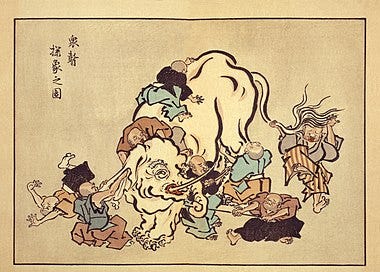Ask five people what the point of internal communications is and you’ll get five different answers.
Build culture.
Enforce alignment.
Create a two-way dialogue with leadership.
Recognize employees.
Share business priorities.
Hell, I’ve gone through several iterations of my own philosophies around internal comms. For a long time, my pithy one-linear was that internal comms served to educate and excite employees — helping them understand both the direction they’re rowing in and getting them pumped to row harder.
I still think that’s true, but I also think the real answer goes a level deeper.
At any company, employees spend the bulk of their time on a single element of the overall company mission. An engineer might be focused on a single feature, a marketer on positioning a single product, a benefits specialist on supporting EMEA employees.
At a high level, they know THAT their efforts contribute to the company’s success. But all too often, they don’t understand WHY.
Everybody Poops
When I was in sixth grade, my social studies teacher, a brash woman with teased blonde hair and her ringtone set to “Redneck Woman,” told us she was going to teach us how to write a paragraph. What the hell is she talking about? I wondered. A paragraph is a couple of sentences about the same thing. What more is there to it?
“Give me a sentence,” she asked.
“Everyone poops,” someone shouted. Giggles bubbled and burst throughout the class.
Mrs. L was unfazed. “Why?” she asked.
"Um,” said the student, surprised their joke had been ignored. “Because everyone eats?”
“Why?”
“Um, because we need food to stay alive, I guess?”
“Why?”
“Because we want to survive.”
“Why?”
“Because…um…we can’t experience life if we’re not alive to live it?”
“That,” Mrs. L said, “is how you write a paragraph. It’s not a bunch of unrelated sentences. Everything has to connect and go deeper.”
It wasn’t a perfect analogy for writing — the paragraph it produced was hardly art (and arguably isn’t even really a paragraph). But it was a good model for understanding how the smallest fact can telescope into something much more profound…IF you draw the connection for people, piece by piece.
You can’t just say that people poop to experience life. You have to take them on the journey with you.
It’s the same with internal comms. People generally understand their daily responsibilities (“everyone poops”; “managing social media”). And ideally they also understand the company’s overall mission (“experiencing life”; “organize the world's information and make it universally accessible and useful”). But too often these two things, the quotidian and the big picture, are too far apart for people to really grasp how they’re connected.
Internal comms is about helping people understand the telescoping journey between their day-to-day and the slogan your company has on their website.
For Example
An engineer is working on a feature for an existing product.
Why?
Because that feature is something clients have been demanding.
Why?
Because fixing that feature will make life for client employees meaningfully easier.
Why?
Because clients happy with this feature will be good targets for upsells.
Why?
Because in this economic climate, convincing clients to switch vendors is much harder than upselling, so growth depends on upsells.
Why?
Because if we continue to grow the business, we’ll be able to expand into Related Area and contribute to the future metaverse / organize the world’s information / bring the best UX to customers / exist.
You can take this as deep as you want, but you see the logic here. Helping people understand how their work ladders up to the company’s mission, both in the immediate and the future, requires helping them see the why piece by piece.
Blind Men and the Elephant
Another way of thinking about it is like the blind men and the elephant. Every employee touches their own part of the business — the tusk, the trunk, the ears, the leg — but without internal comms, they don’t understand that what they’re touching is an elephant. (Look, you didn’t think you were getting out of here without a mixed metaphor, did you?)
Context Not Control
When your internal comms effectively links work to bigger-picture companies priorities, you reap another benefit: needing to exert less control over how people spend their time day to day. Because if people understand what the company’s goal is, they can make choices for themselves or their teams about which projects to prioritize. (Netflix has a principle of context not control that is relevant here.)
Enfin
The reason people take enormous pay cuts to work on political campaigns or nonprofits is because they understand how essential the company’s mission is and how their work will contribute, even if they’re just answering phones or knocking on doors.
And when people leave organizations, it’s rarely because they don’t believe in the mission (that should have been a gating factor to them deciding to join in the first place). More often, it’s because they don’t see how what they’re doing contributes to the larger mission, or they sense a disconnect between what they’re doing and that larger mission (“Why am I spending all day debugging our old product when our strategy clearly rests on this shiny new product with way more users and growth?”).
Linking their daily work to the company’s overall goals — drawing for them the entire elephant — is the most powerful work of internal comms.



